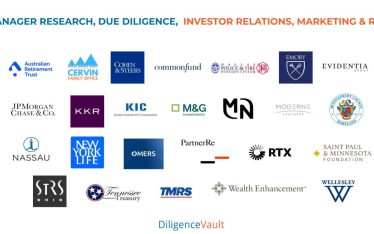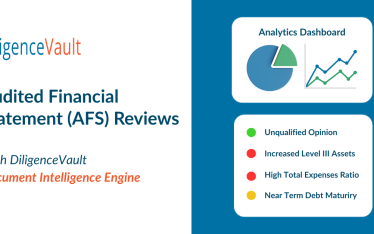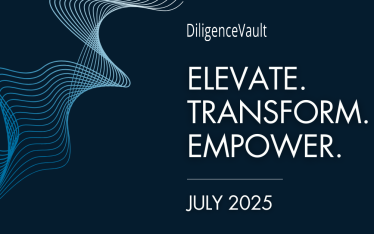Hundreds, and sometimes thousands, of historical questions and answers, are used to populate RFPs and DDQs. The problem is that information is stored here, there, and everywhere.
Investors want timely, accurate responses.
If your team is spending time searching for answers, updating them, or asking subject matter experts (SMEs) to contribute to every request, it will slow down your response time. Not to mention frustrate the SME.
Every quarter you experience the same redundant and time-consuming effort to update and maintain your responses to frequent investor requests.
Worse, if you give a stale or wrong answer because there are multiple answers for similar questions, and you didn’t know which one was correct, it opens up the firm to unnecessary reputational, legal and compliance risks.
In this article, we’ll help you understand what a content library is, why content centralization is critical to your firm’s performance, and some of the key benefits of using a content management system.
Let’s dive in.
First, some of the basics:
What is a content library?
A content library is a digital collection of all of your RFP and due diligence responses, images, data points and documents in a centralized and secure repository. A content library enables asset managers to organize critical firm content, collaborate with other team members using a central content library, and easily access information.
Storing your content library in a cloud-based content management system is known as content centralization.
But content libraries aren’t just for documents. A secure content management system can also help you organize images, disclaimers, AUM history, and more.
A content library can be known by many names. These terms include Q&A library, answer bank, knowledge management, narratives, pre-approved library, standard answers, RFP library, Due Diligence Questionnaire (DDQ) library, and more.
Let’s take a look at how your asset managers can do their jobs faster, more efficiently, and with fewer redundancies when using a content management system.
What are the benefits of using an RFP content library?
There are several benefits to utilizing a centralized RFP content library for your RFP and DDQ content. Simply put, it gives asset managers a single source of truth so they can access the most up-to-date information at all times, helping them work faster and win more mandates.
1. Easily and Quickly Fulfill Investor Requests
Every asset manager knows the challenge of needing to complete investor requests for multiple products. Managing product-specific content is challenging when it’s spread over numerous documents, across several email chains, and in scattered shared drives.
Similarly, reporting for different investors presents its own set of challenges. Institutional and wealth investors and US vs. non-US investors have very different reporting and disclosure requirements.
A content management system eliminates the need to copy, paste, and reformat disparate documents manually. A savvy system allows you to upload your approved content and easily search for, access, and present it in the appropriate format for your investor requests.
Best of all, since all the content in your library is pre-approved, you know you’re working from the most accurate information set.
2. Stop Chasing Down SMEs
A centralized content library eliminates the need to constantly chase down subject matter experts for responses. In some cases, a singular data point can hold up the completion of an important request. Furthermore, employees who hold approved information on their own drives and emails may not always be available to respond to even the most urgent requests.
Content management software saves you from these costly delays, as it gives SMEs a single place to review and approve all standard responses. Additionally, a transparent approval structure removes the guesswork for SMEs who are assisting with requests.
Handwritten notes and personal communication channels are unreliable and subject to human constraints and error. In contrast, RFP and DDQ library management software helps you access your content quickly and accurately, 24/7.
3. Templating and Auto-Fill Features
Some of the best content management systems out there do more than allow quick and easy content access. They also enable asset managers to complete standardized questionnaires efficiently and accurately, whether they are firm-specific, ESG topic-related, or product-specific DDQs.
For investor’s custom requests, from request to request, you may be utilizing similar information to respond to new business RFPs, existing investor reporting, regulatory reporting, and various manager databases.
With an industry-specific content management platform, you can templatize your due diligence requests (DDQs) so similar pieces of data can be recalled and duplicated as needed.
Features like ‘intelligent content search’ are designed to pull relevant content for you so you don’t have to search manually. Additionally, machine intelligence capabilities like suggested response engine and auto-fill will suggest new entries based on copies from previous projects.
DDQs can be repetitive. But instead of feeling frustrated by manual copy and pasting, a content management system can streamline lengthy DDQ processes down to minutes.
Sophisticated content management solutions like DiligenceVault allow you to quickly compile supporting content such as templated responses, your image library, document library, AUM, disclaimers, and more – all of which improve your ability to generate a robust response rapidly.
4. Content Categorization and Search
Your RFP content library needs to be tailored to the investment industry to get you the most ROI. It should allow you to segment and categorize your content by:
- Firm
- Products
- Strategies
- Vehicles
- And investors
Content categorization not only allows you to keep your data organized and easy to search, but it uses AI-backed technology to ensure your content is tailored to the subsets of the industry that are most critical to your business.
A content library enables you to have a single source of searchable content for all your standard answers. You can easily search content on the platform and directly from Word, PowerPoint, Outlook, and your internet browser.
5. Stay Competitive and Win More Business
Can a DDQ and RFP content management system really help you win more mandates? We like to think so. In volatile times especially, investors want to work with asset managers who are organized, timely, efficient, and dedicated to data integrity. Not only will you respond to requests faster; your speed and efficiency will lend themselves to a higher-quality engagement model.
The reality is that people expect answers quickly. A content library not only automates repetitive processes for your asset managers, but allows them to refocus on the most essential part of your business: investor relations.
Read more on investor relations in our recent webinar, Leveling Up Your Investor Relations.
6. Remain Turnover-Resilient
Turnover is always a concern with investor relations teams. Not only do managers want to work with businesses that enable their success with the best technology, but when employees can do their jobs well, they want to stay at a firm.
But perhaps the more considerable concern with turnover is knowledge loss. When employees with institutional knowledge leave the firm, they often take critical pieces of information that prevent the rest of your team from fulfilling requests promptly.
Content libraries keep your content in one place to ensure knowledge turnover doesn’t impact the larger team. When all of your pre-approved content is in one secure location, there’s no need to panic about knowledge transfer during an employee’s transition out of the firm.
7. Seamless Cross-Team Collaboration
Your compliance team isn’t the only group that will benefit from working from a single centralized location. A content library enables streamlined, cloud-based, and secure access by RFP teams, IR teams, product specialists, marketing teams, and compliance teams. Simply put, everyone benefits from access to your firm’s most critical content.
Having a centralized solution with firm-wide applications also improves efficiency and consistent messaging for all external stakeholders.
Additionally, a content library allows you to track changes, review a document’s history, restore older versions, and stay compliant.
DiligenceVault Has the Content Management System You Need
Asset managers need flexible content technology that multiple stakeholders can leverage within the firm.
As the leading solution in the asset management industry, DiligenceVault empowers asset managers to do their jobs smarter, faster, and with ease. Our platform was designed for asset managers by asset managers. Contact us to learn more, or view DiligenceVault’s content management system details here.
Keep Learning:
We surveyed over 600 fund managers to learn more about the asset management industry’s reliance on extensive information exchange between fund managers and investors for both fundraising and ongoing client engagement. See the results here.
Even if you’re excited about the benefits of such a content solution, getting started can be challenging. As an additional resource, download DiligenceVault’s whitepaper on how to select technology that meets your needs and how to create a business case for internal approvals.



